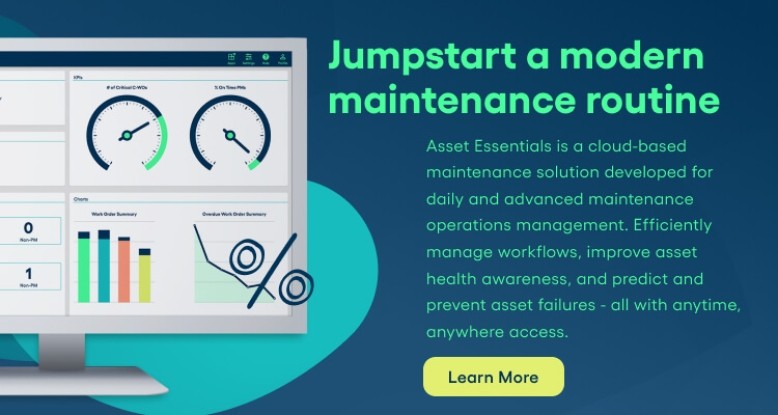3 TPM Implementation Challenges & What to Do About Them
Read this blog on total productive maintenance to find out how a CMMS can help you tackle challenges around maintenance.
Total productive maintenance (TPM) has been gaining momentum as manufacturers work to incorporate lean manufacturing methodologies in their operations. While a TPM implementation promises a great deal of benefits – lower costs, improved employee morale and greater operational efficiency – it comes with a few caveats. The largest of those is that it is incredibly difficult to deploy effectively. A Reliable Plant resource says that TPM is the most difficult lean strategy to implement in manufacturing, and it wasn’t exaggerating.
Migrating to a TPM strategy requires a great deal of change, and all of these adjustments can leave organizations scrambling to get momentum around their projects.
Three of the most prominent TPM implementation challenges facing organizations are:
1. Cultural Change
Adjusting an organization’s culture around the principles of TPM may sound like a big, abstract concept. In reality, it involves a wide range of practical, actionable tactics organizations can act on to ensure success. A few of the most important considerations, according to Reliable Plant, include:
- Establish a formal code of conduct that sets expectations for how employees are expected to interact.
- Obtain buy-in from management at the outset of the transition and be sure to keep those leaders on board.
- Create maintenance strategies for equipment when it is new to avoid falling into reactive patterns that can undermine TPM plans.
- Ramp up expectations for preventative maintenance and predictive maintenance – between 75 and 90 percent of maintenance tasks should fall within this framework.
These specific strategies can add up to create a dramatic culture change that amounts to a revitalization of maintenance departments, the report explained. For most organizations, the tendency to consider maintenance teams as cost sinks that are necessary, but not strategically important to the business, has led to a significant divide between maintenance departments and other teams. This has directly fueled environments in which maintenance workers are reactive, on-call employees – not key contributors to revenue-generating operations.
Tearing down these cultural expectations is critical to TPM success. Reliable Plant pointed out that treating maintenance as a leading contributor to the business is a first step to TPM success. From there, taking advantage of the tips mentioned above can help organizations drive the cultural change that is necessary to create better connections and cooperation between maintenance teams and the rest of the organization.
2. Wasteful Inventories
Traditional warehousing and inventory management strategies often segregate parts and supplies from production areas and allow for significant inventory overhead to avoid parts shortages. These strategies can directly undermine lean operational strategies, including TPM, and a research paper published in the International Journal of Advanced Engineering Technology says excess inventories lead to waste.
Establishing an equipment effectiveness management strategy allows manufacturers to:
- Precisely measure what resources different assets require.
- Identify the best location to store parts and supplies to keep them out of the way, but easily accessible by maintenance and production teams.
- Establish a constant flow of materials to streamline operations.
All told, the paper explained that trimming excess inventories and storing small quantities of materials near production makes it easier to establish TPM functionality by simplifying the equipment management process.
Modern computerized maintenance management systems (CMMS) can be especially important when considering a more strategic inventory management strategy. A CMMS enables users to log part usage within accompanying apps, easily view inventory levels across multiple locations and receive alerts when supplies need to be replenished. This type of visibility into inventory levels makes it easier to establish more flexible, location-diverse parts and materials storage methods.
3. Neglecting Continuous Improvement and Performance Management
A report published by the International Journal of Advance Research and Innovation points to the need for continuous improvement as a major priority for TPM programs. This cultural issue plays a critical role in TPM programs as a TPM strategy will need to shift as business requirements, machine demands and employee skills change. TPM is not a set-it-and-forget-it strategy. Instead, the effort requires a commitment to constant growth.
While continuous improvement may seem intimidating, the report also noted that benchmarking and performance analysis are critical for TPM. This goes hand-in-hand with continuous improvement. Manufacturers that can gain visibility into key performance metrics are able to constantly evaluate their operations and make small tweaks to processes, policies and cultural priorities accordingly. TPM may be difficult because it demands constant growth, but effective performance management can play a critical role in driving success.
Using a CMMS to Simplify TPM Efforts
All of these points – cultural change, inventory waste and performance management – form around a central idea of TPM: Manufacturers implementing TPM plans must remove silos within the business and promote integrated work strategies between distinct teams. Digitizing the varied systems used by these teams and integrating them – at least as much as possible – is critical in this process. A well-designed CMMS with a dedicated mobile app is designed to coordinate maintenance operations through greater data visibility built into processes, and this functionality can help bridge gaps as companies strive for TPM excellence.
Learn more about our CMMS designed specifically for manufacturing organizations by scheduling a demo.




